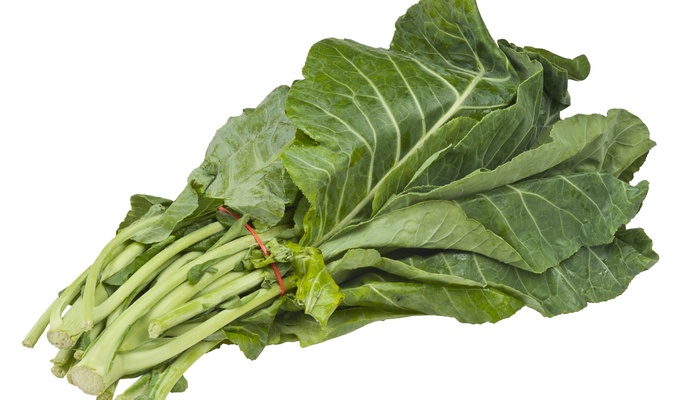Collards describes a group of loose-leafed cultivars of Brassica oleracea, a species that includes other common vegetables such as cabbage, broccoli, and kale. The leaves of collard greens are typically large, thick, and dark green, exhibiting a slightly bitter flavor and a sturdy texture that holds up well to extended cooking. These greens are biennial but are most commonly grown as annuals and harvested for their leaves before the plant bolts.
In culinary use, collard greens are usually cooked before consumption, as the raw leaves tend to be tough and fibrous. In the southern United States, collards are frequently simmered with smoked or salted meats, onion, and other seasonings, producing a nutrient-rich pot liquor often consumed as a broth. In East and Southern Africa, collard greens — called sukuma wiki in Swahili — are typically chopped and sautéed with onions, tomatoes, and occasionally spices, sometimes serving as a primary vegetable dish. The plant is also used in Portuguese cuisine, prominently featured in caldo verde, a traditional soup, as well as in Brazilian and Balkan preparations.
The English term "collard" derives from the older form "colewort," with "cole" meaning "cabbage" and "wort" meaning plant or vegetable.
Historically, the consumption of collard greens is documented for at least two millennia. Archaeological and textual evidence indicates that the ancient Greeks cultivated non-heading cabbages, which are understood by modern botanists to be akin to collard greens. The spread of Brassica oleracea cultivars increased with the expansion of the Roman Empire throughout Europe and North Africa. By the Middle Ages, collards were a staple crop in Southern Europe and gradually gained agricultural importance in other temperate regions.
